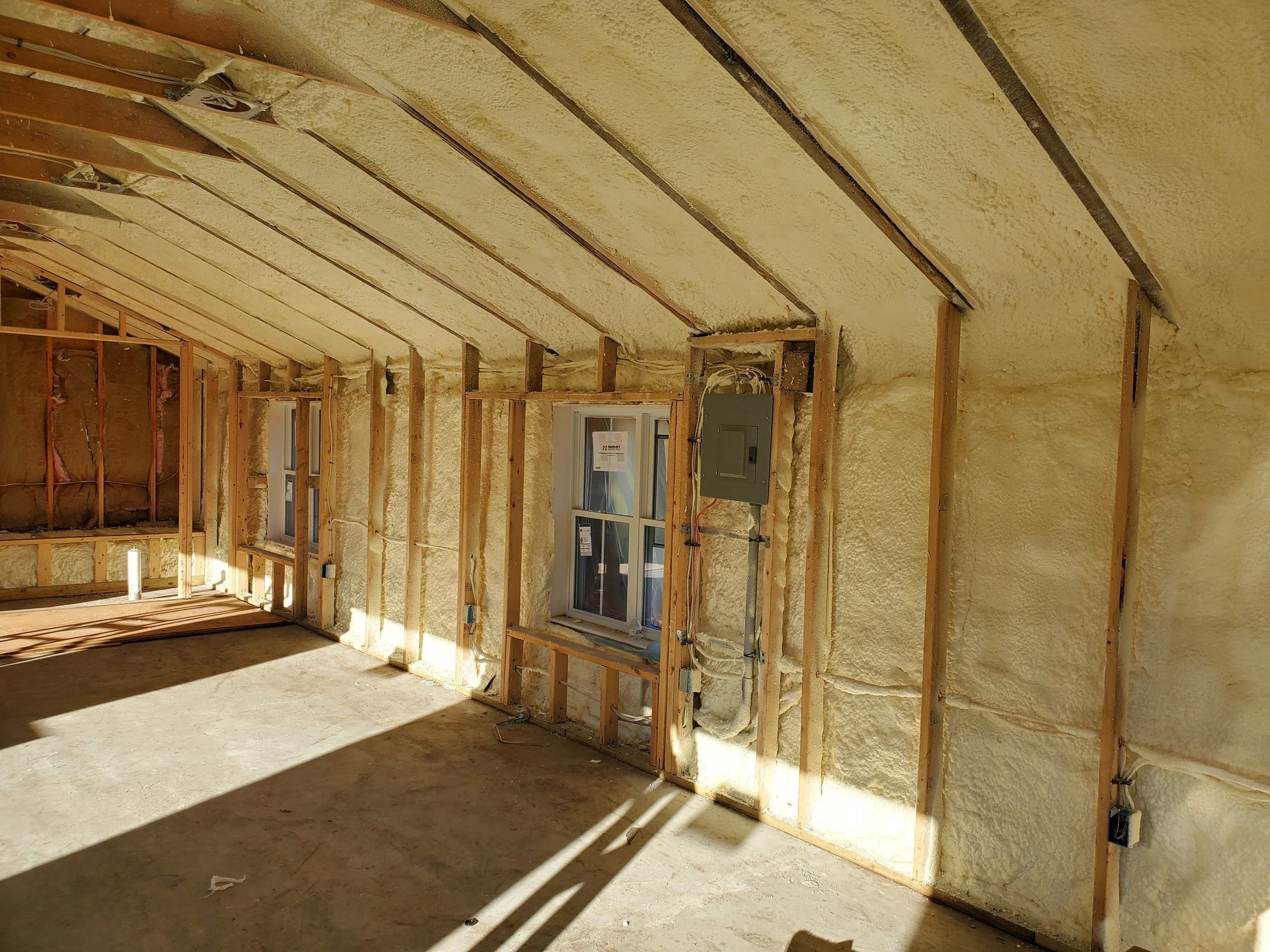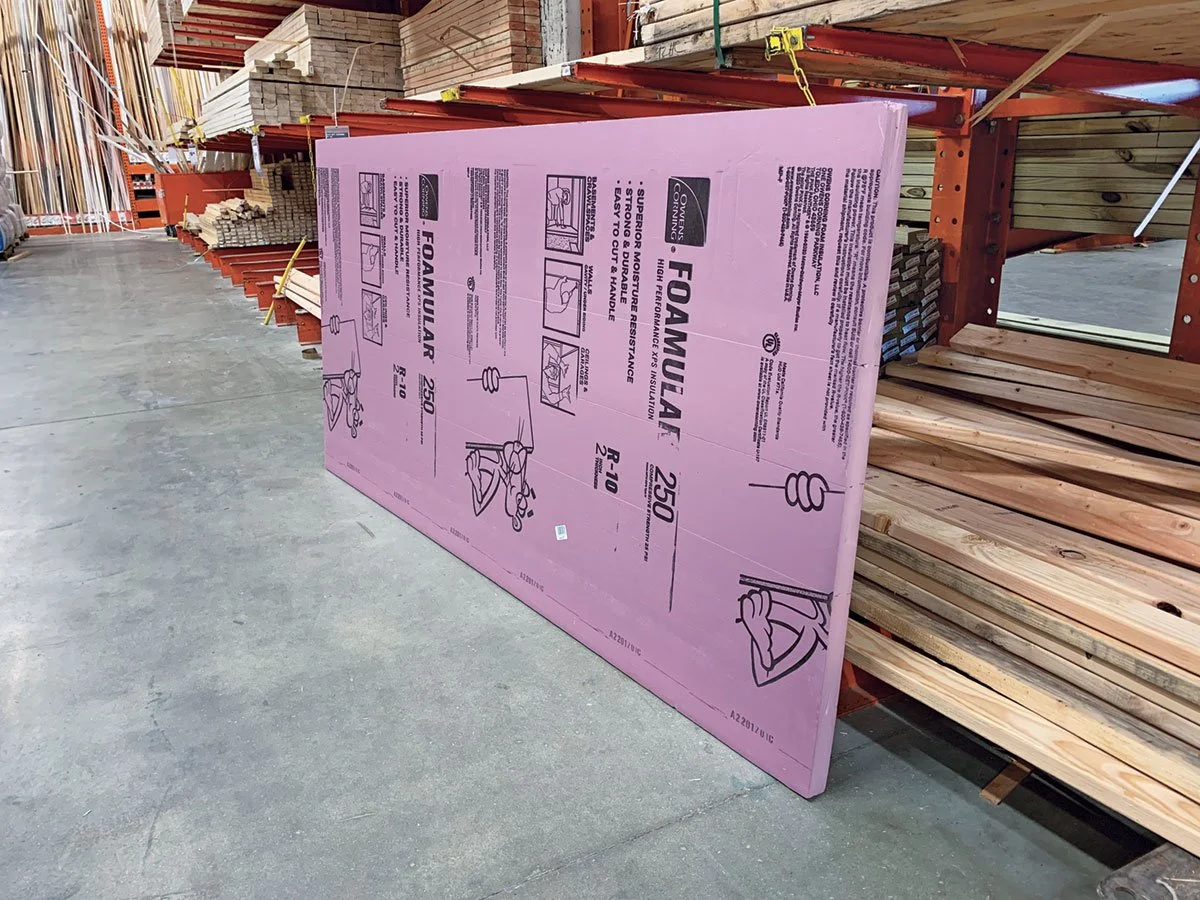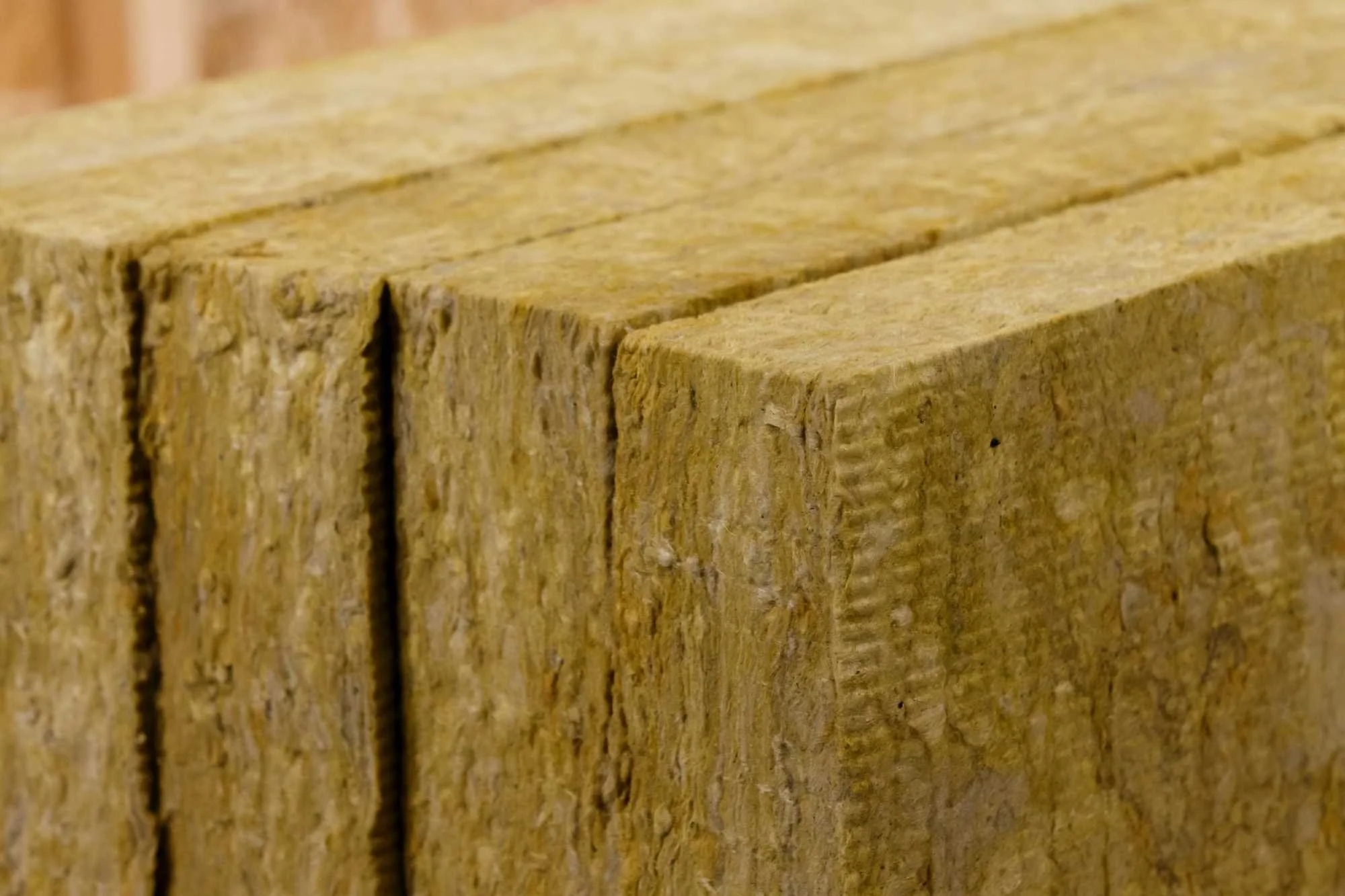All types of insulation and where to use them
Insulation is used to reduce heat transfer and maintain a more consistent temperature within a building. The choice of insulation material and its application depends on various factors, including the climate, building type, and specific requirements. Here are some common types of insulation and where to use them:
Fiberglass Insulation:
Commonly used in attics, walls, and ceilings.
Effective at resisting heat transfer and is relatively affordable.
Available in batts, rolls, or loose-fill form.
Cellulose Insulation:
Made from recycled paper or wood fibers.
Suitable for walls, attics, and as loose-fill insulation.
Good for reducing air infiltration and can be blown into wall cavities.
Composition: Cellulose insulation is composed of approximately 80-85% recycled paper fibers, primarily from newspapers, magazines, and cardboard, and 15-20% fire-retardant additives such as boric acid or ammonium sulfate. These additives make the insulation resistant to fire, insects, and mold.
Forms: Cellulose insulation is available in two primary forms: loose-fill and dense-pack. Loose-fill cellulose is often blown into attics, walls, and other cavities using specialized equipment. Dense-pack cellulose is used for retrofit applications, where it's densely packed into wall cavities to improve the insulation's effectiveness.
R-Value: The R-value of cellulose insulation typically ranges from R-3.2 to R-3.8 per inch, which is similar to fiberglass insulation. The R-value represents the insulation's ability to resist heat transfer; the higher the R-value, the better the insulation.
Fire Resistance: One of the notable benefits of cellulose insulation is its inherent fire resistance. The borate or ammonium sulfate additives in cellulose insulation make it less likely to ignite. However, cellulose insulation is not completely fireproof and can smolder if exposed to a direct flame.
Pest Resistance: Cellulose insulation is treated with borate additives, making it unattractive to pests like rodents and insects. This can help deter infestations.
Moisture Control: Cellulose insulation has some moisture-handling properties, but it's important to ensure that it is not exposed to excessive moisture. Moisture can reduce its effectiveness and promote mold growth.
Installation: Proper installation is crucial for cellulose insulation's effectiveness. It should be installed by experienced professionals who ensure it's evenly distributed, packed to the correct density, and free from gaps or voids.
Sound Insulation: In addition to thermal insulation, cellulose insulation can provide some degree of soundproofing, reducing noise transfer between rooms and floors.
Environmental Benefits: Cellulose insulation is considered environmentally friendly because it is made from recycled materials. It is also a renewable resource, and the manufacturing process typically requires less energy compared to other insulation materials.
Cost: The cost of cellulose insulation can vary depending on factors like the type of application, the location, and the installation method. It is generally competitive with other insulation materials like fiberglass or foam.
Sustainability: Cellulose insulation contributes to reducing landfill waste by recycling paper products. Its long-term energy-saving benefits can also help reduce greenhouse gas emissions.
When considering insulation for your home or building, it's essential to consult with an insulation professional who can provide guidance on the best insulation material and installation method for your specific needs and climate.
Spray Foam Insulation:
Spray Foam Insulation
Ideal for sealing gaps and cracks.
Can be used in walls, attics, and crawl spaces.
Offers a high R-value and is effective at air sealing.
The cost of spray foam insulation can vary significantly depending on various factors, including the type of spray foam used, the size of the area being insulated, and your geographic location. There are two main types of spray foam insulation: open-cell and closed-cell. Here's an overview of each type and their respective costs:
Open-Cell Spray Foam Insulation:
Open-cell spray foam is a lighter and less dense type of foam.
It has a lower R-value (insulating value) compared to closed-cell foam.
It is often used in interior applications like walls and ceilings.
Cost: On average, open-cell spray foam insulation can cost between $0.35 to $0.55 per board foot, which is a measure of volume. However, prices may vary by region and installation complexities.
Closed-Cell Spray Foam Insulation:
Closed-cell spray foam is denser and has a higher R-value, making it a more effective insulator.
It is often used in exterior applications, including roofs and foundations.
Closed-cell foam is known for its excellent moisture resistance and structural reinforcement qualities.
Cost: Closed-cell spray foam insulation tends to be more expensive, typically ranging from $1 to $1.50 or more per board foot.
Other factors that can influence the cost of spray foam insulation include the following:
Size of the Area: Larger areas will cost more than smaller ones, but you may receive a lower cost per square foot for larger projects.
Location: Prices can vary by region due to differences in labor and material costs.
Accessibility: If the area to be insulated is difficult to access, it may require more labor and materials, increasing the cost.
Labor Costs: Labor costs for installation can vary depending on local wages and the complexity of the job.
Additional Work: If you need to remove existing insulation or make repairs before installation, it can add to the overall cost.
Quality and Thickness: The desired thickness of the insulation and the brand or quality of the spray foam can affect the cost.
It's essential to obtain quotes from local insulation contractors to get an accurate estimate for your specific project. They can assess your needs, provide recommendations, and offer cost estimates based on your particular circumstances. Additionally, you may want to consider the long-term energy savings that can result from properly insulating your home or building, which can help offset the initial cost of installation.
Rigid Foam Insulation:
Rigid Boards Insulation
Used for insulating foundations, roofs, and exterior walls.
Comes in boards or panels and offers high R-value.
Provides both insulation and moisture resistance.
Reflective or Radiant Barrier Insulation:
Best for reducing radiant heat transfer.
Often used in attics and can be installed in the form of foil-faced insulation.
Reflects heat away from the living space.
Materials:
Rigid board insulation can be made from various materials, including:
Extruded Polystyrene (XPS): Offers high moisture resistance and durability.
Expanded Polystyrene (EPS): Lightweight and cost-effective, but less moisture-resistant than XPS.
Polyisocyanurate (Polyiso or ISO): Provides a high R-value and is often used in commercial applications.
Phenolic Foam (PF): Known for its excellent fire resistance and low thermal conductivity.
R-Value:
Rigid board insulation materials have varying R-values, which measure their thermal resistance. The higher the R-value, the better the insulation's performance. Different materials and thicknesses will yield different R-values.
Installation:
Rigid board insulation is installed on walls, roofs, floors, or other building surfaces to create a continuous thermal barrier.
It can be attached using adhesives, mechanical fasteners, or a combination of both, depending on the specific application.
Uses:
Rigid board insulation is used in various applications, including:
Exterior wall insulation
Roof insulation
Foundation insulation
Under-slab insulation
Cavity wall insulation
Advantages:
High thermal performance: Rigid board insulation materials typically have high R-values, making them effective at reducing heat transfer.
Structural support: Rigid boards can provide additional structural strength to walls and roofs.
Moisture resistance: Some types, like XPS, offer good resistance to moisture, making them suitable for applications below grade or in wet environments.
Fire resistance: Materials like phenolic foam offer excellent fire resistance properties.
Longevity: Rigid board insulation materials are durable and can last for the life of the building when properly installed and maintained.
Limitations:
Cost: Rigid board insulation can be more expensive than other insulation options.
Installation expertise: Proper installation is crucial for its effectiveness, and it often requires professional installation.
Environmental considerations: Some rigid board insulation materials may not be as environmentally friendly as other options, and recycling or disposal can be a concern.
Mineral Wool Insulation:
Mineral Wool Insulation
Suitable for high-temperature applications and soundproofing.
Used in walls, ceilings, and around HVAC systems.
Offers good fire resistance and acoustic insulation.
Composition: Mineral wool insulation is typically made from one of two types of materials: rock wool or slag wool. Rock wool is made from natural basalt rock, while slag wool is made from the slag produced during the manufacturing of iron and steel. These raw materials are melted and then spun into fibers.
Types: There are two primary types of mineral wool insulation: batts and blankets, and loose-fill. Batts and blankets are typically used for insulating walls, ceilings, and floors, while loose-fill is often blown into attic spaces.
Properties:
Thermal Insulation: Mineral wool insulation is an excellent thermal insulator, effectively reducing heat transfer and providing energy savings.
Fire Resistance: Mineral wool has excellent fire-resistant properties, making it suitable for fire-rated applications. It can withstand high temperatures without melting or releasing toxic fumes.
Sound Absorption: It has good sound-absorbing properties, making it useful for acoustic insulation.
Moisture Resistance: Mineral wool is resistant to moisture, which helps prevent mold and mildew growth.
Non-combustible: Mineral wool is non-combustible, which means it doesn't contribute to the spread of fires.
Rot and Pest Resistant: It is not susceptible to rot or damage by pests like termites.
Installation: Mineral wool insulation can be installed by professionals or as a DIY project. Batts and blankets are typically placed between wall studs, ceiling joists, or floor joists. Loose-fill mineral wool is blown or poured into attic spaces or wall cavities.
R-Value: The R-value of mineral wool insulation can vary depending on its density and thickness. A higher R-value indicates better insulation properties. It's important to choose the appropriate thickness and density to meet the desired thermal performance.
Environmental Considerations: Mineral wool is made from abundant and recyclable materials. While the production process requires energy, it has a low environmental impact and is often considered environmentally friendly.
Health Considerations: Mineral wool can produce fine dust particles during installation, which can be harmful if inhaled. Proper personal protective equipment should be used when handling and installing mineral wool insulation.
Regulations and Standards: Mineral wool insulation products are subject to various regulations and standards to ensure safety and performance. Make sure to check local building codes and standards when using mineral wool insulation.
Overall, mineral wool insulation is a versatile and effective option for thermal and acoustic insulation in a variety of building applications. It offers excellent fire resistance, sound absorption, and thermal performance, making it a popular choice for both residential and commercial construction projects.
Polyurethane Insulation:
Provides excellent thermal insulation and is available as foam boards or spray foam.
Used in walls, roofs, and foundations.
Offers a high R-value and good moisture resistance.
Natural Fiber Insulation:
Made from materials like cotton, wool, or hemp.
Used in walls and attics.
Environmentally friendly and has good thermal and acoustic properties.
Aerogel Insulation:
Extremely lightweight and has excellent insulating properties.
Used in applications where space is limited, such as spacecraft and industrial equipment.
Composition: Aerogels are solid materials that are created by replacing the liquid component of a gel with a gas, resulting in a substance that is more than 95% air. They are typically composed of a three-dimensional network of silica or other materials.
Low Thermal Conductivity: Aerogels have one of the lowest thermal conductivities of any solid material. This means they are excellent at reducing heat transfer. Aerogel insulation is highly effective at minimizing heat loss or gain in buildings and industrial applications.
Lightweight: Aerogels are extremely lightweight due to their high porosity, with densities as low as a few milligrams per cubic centimeter. This makes them suitable for applications where weight is a concern.
Thin Profiles: Aerogel insulation can be used in very thin profiles, making it ideal for applications where space is limited or weight needs to be minimized.
Transparency: Some aerogels are transparent and can be used in applications such as transparent thermal insulating windows or skylights.
Hydrophobic: Many aerogels are naturally hydrophobic, which means they repel water. This property makes them resistant to moisture absorption, which is crucial for maintaining their insulating capabilities.
Temperature Range: Aerogel insulation can operate effectively within a wide temperature range, from cryogenic temperatures to high-temperature industrial applications.
Applications: Aerogel insulation is used in a variety of applications, including building insulation, oil and gas pipelines, aerospace, cryogenics, and protective clothing. It is also employed in the construction of energy-efficient windows, as well as in the automotive and electronics industries.
Installation: Aerogel insulation is available in various forms, including blankets, panels, and granular materials. It can be used in new construction or retrofitted into existing structures. The installation process depends on the specific product and application.
Cost: Aerogel insulation is known for its high performance, but it can be more expensive than traditional insulation materials such as fiberglass or foam board. However, its long-term energy-saving benefits can justify the initial investment in many cases.
Aerogel insulation offers outstanding thermal performance while minimizing space and weight requirements. It is a versatile material with a wide range of applications in industries where thermal insulation is critical.
Vacuum Insulation Panels (VIPs):
Utilizes a vacuum to reduce heat transfer.
Used in appliances, building envelopes, and high-performance applications.
The choice of insulation type depends on factors like your climate, budget, and specific needs. It's important to consider the R-value (thermal resistance) of the insulation material, as well as factors like fire resistance, moisture resistance, and installation method. Consulting with a professional or conducting an energy audit can help you determine the best insulation for your specific situation.



